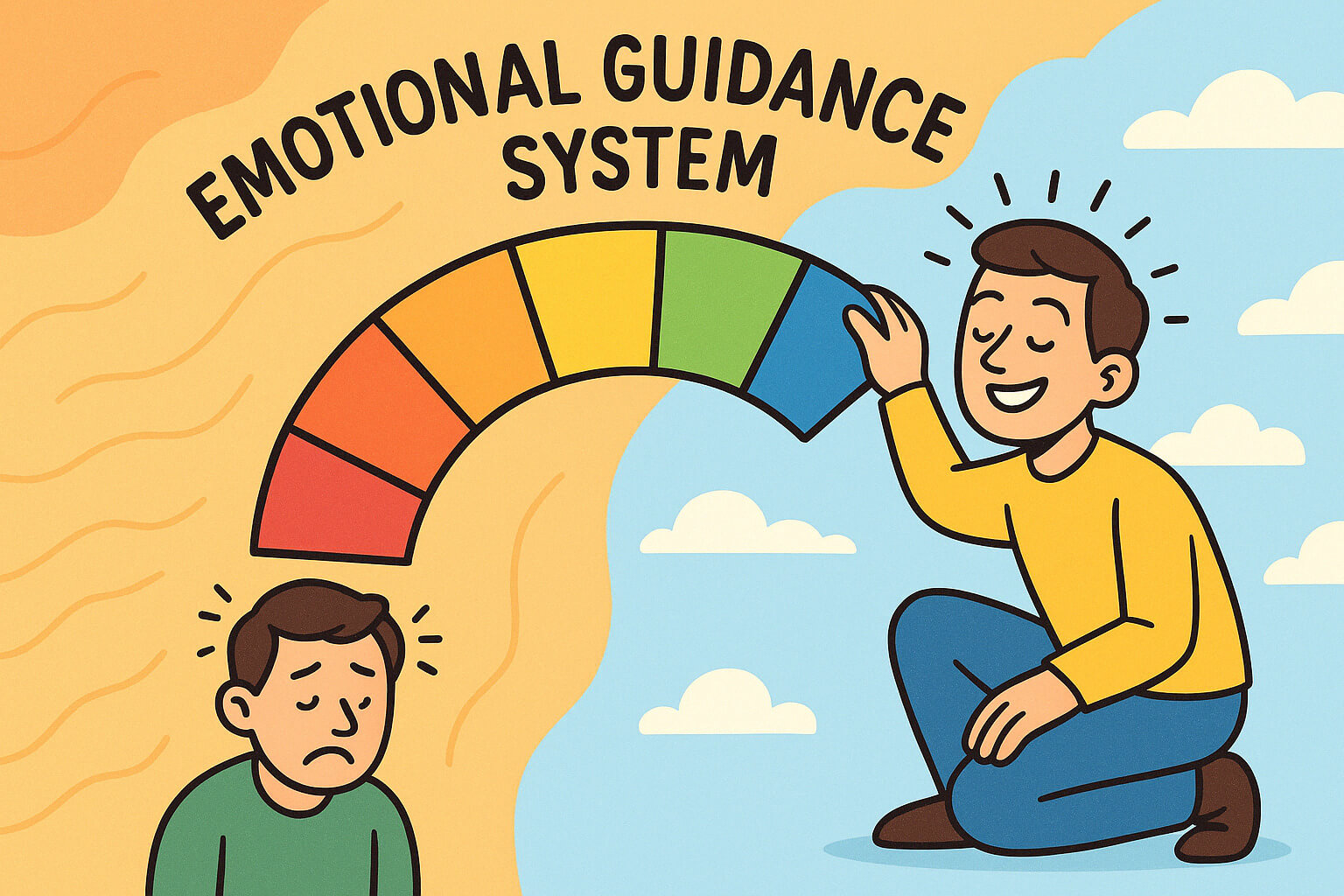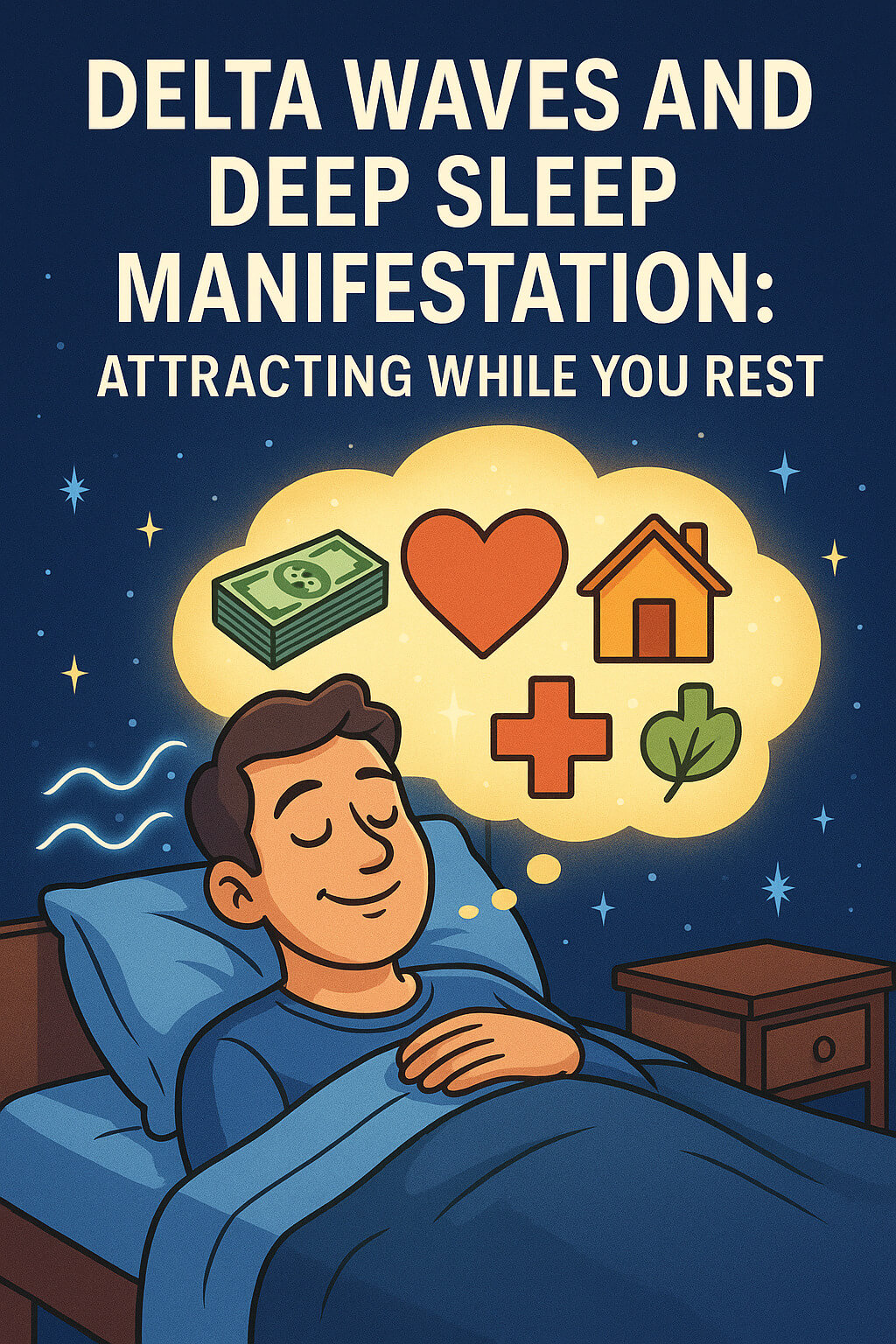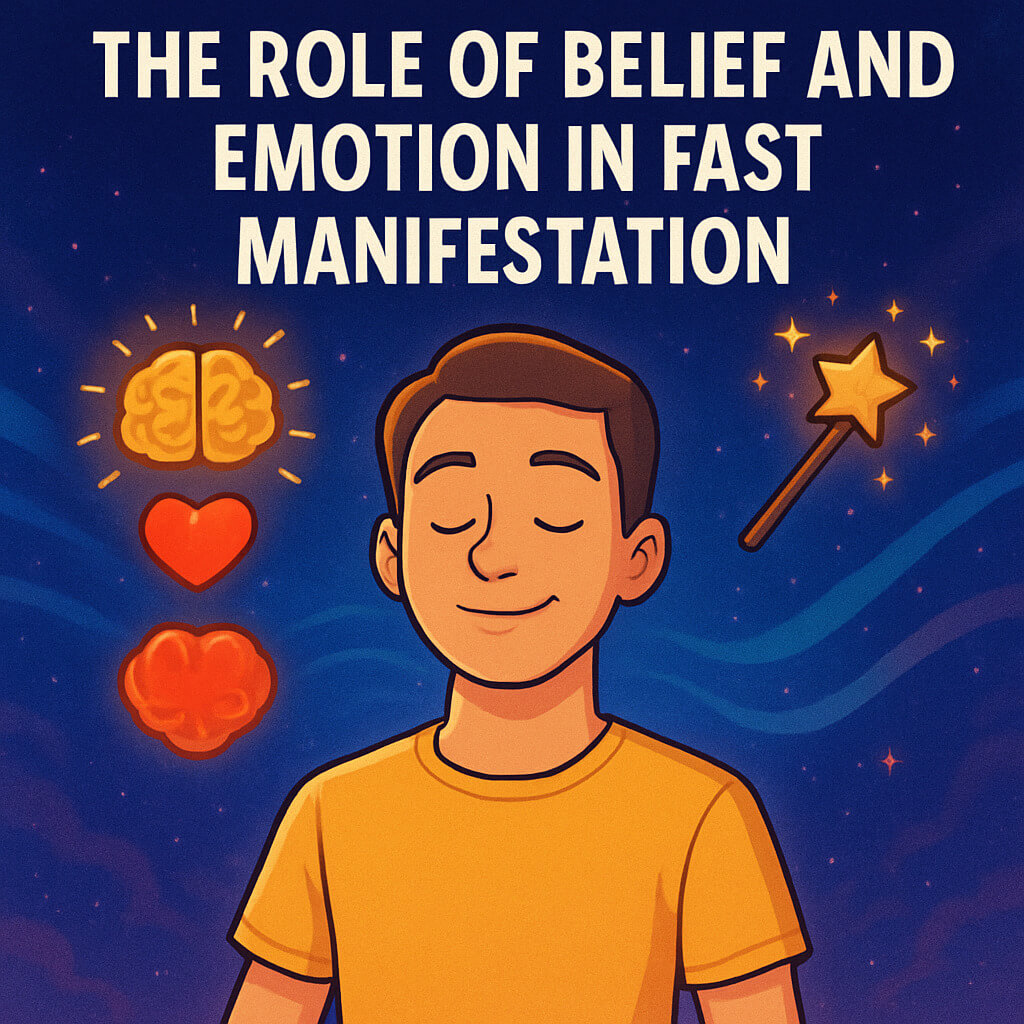Have you ever wondered why some people seem to live in a constant state of happiness, while others struggle with stress, frustration, and disappointment? What if I told you that your emotions are not random, but instead, they serve as a built-in guidance system designed to lead you toward the life you truly desire?
This is where understanding the Emotional Guidance System (EGS) becomes powerful. When you learn how to use it correctly, it acts as your personal GPS, helping you navigate from lower emotional states to the highest levels of joy, bliss, and love. The truth is, you don’t need to force positive thinking, struggle with motivation, or fight against negativity. Instead, by working with your emotions, you can move naturally up the scale toward feelings that bring more abundance, health, and success into your life.
What Is the Emotional Guidance System?
The Emotional Guidance System is the internal feedback mechanism that tells you whether your current thoughts, beliefs, and actions are in alignment with your desires. Imagine it like a compass: when you feel good, you are heading in the right direction. When you feel bad, your inner self is telling you to course-correct.
This concept has been around for centuries, but modern teachers have popularized it in an easy-to-understand way. The idea is that your emotions exist on a scale, ranging from the lowest vibrations (fear, grief, depression) to the highest vibrations (love, joy, freedom). The key to transforming your life is recognizing where you are on the scale and gradually shifting upward.

The Emotional Scale: From Low to High
Here’s a general breakdown of the Emotional Guidance Scale:
- Joy, Bliss, Love, Appreciation (Ultimate Alignment)
- Passion
- Enthusiasm, Eagerness, Happiness
- Positive Expectation, Belief
- Optimism
- Hopefulness
- Contentment
- Boredom
- Pessimism
- Frustration, Irritation, Impatience
- Overwhelm
- Disappointment
- Doubt
- Worry
- Blame
- Discouragement
- Anger
- Revenge
- Hatred, Rage
- Jealousy
- Insecurity, Guilt, Unworthiness
- Fear, Grief, Depression, Powerlessness (Lowest Vibration)
How to Move Up the Scale Naturally
Many people try to force themselves from a low emotional state directly into joy or bliss. But this often backfires because the jump is too extreme. If you’re feeling hopeless, you can’t suddenly believe that everything is perfect. Instead, the key is to make incremental shifts.
Here’s the process:
1. Identify Where You Are
Take a moment to assess how you’re feeling. Are you anxious? Frustrated? Feeling stuck? Simply recognizing where you are on the scale brings awareness, which is the first step to change.
2. Aim for the Next Best Feeling
Rather than reaching for joy immediately, focus on feeling slightly better. If you’re feeling powerless, moving to anger is actually progress! If you’re in frustration, aim for hopefulness. Small, achievable emotional shifts create lasting change.
3. Use Your Thoughts Intentionally
Thoughts create emotions. If you find yourself stuck in worry, gently introduce a thought that feels better. For example:
- Instead of “Nothing ever works out for me,” try “Maybe things can get better.”
- Instead of “I’ll never have enough money,” try “There are people who have changed their financial situation, so maybe I can too.”
Notice how these shifts don’t require blind optimism but simply nudge you toward a better feeling.
4. Embrace the Power of Appreciation
Gratitude and appreciation are powerful tools to move up the scale. Even in difficult moments, finding something to appreciate—your breath, a warm drink, a kind interaction—helps shift your emotional state.
5. Engage in Activities That Uplift You
Sometimes words alone aren’t enough. Engage in activities that naturally raise your vibration: listening to uplifting music, taking a walk, playing with pets, or watching something funny. Your body and mind respond to joyful actions.
6. Release Resistance and Let Go
One of the biggest obstacles to raising your emotional state is resistance. When you hold on to negative emotions, whether it’s guilt, resentment, or doubt, it keeps you stuck in a lower vibration. The key is to acknowledge these emotions without judgment and then let them pass. A simple technique to help with this is deep breathing or mindfulness exercises. By allowing yourself to feel your emotions without resistance, they naturally begin to dissipate.
7. Surround Yourself with Positivity
Your environment plays a crucial role in shaping your emotions. The people you spend time with, the media you consume, and the conversations you engage in all affect your vibration. Surround yourself with uplifting influences—people who inspire you, books that empower you, and experiences that bring you joy. The more positivity you absorb, the easier it becomes to stay in higher emotional states.
8. Meditation
Meditation is one of the most effective ways to move up the emotional scale. It allows you to take control over your mind, quiet negative thoughts, and reset your emotional state. Even just 5 to 10 minutes a day can create a noticeable shift. Meditation trains your brain to detach from stress and worry, making it easier to move toward more positive emotions effortlessly. The more you practice, the more natural it becomes to stay in a state of peace, clarity, and joy.

Why Higher Emotional States Matter
When you’re in the upper levels of the scale (joy, love, appreciation), everything flows with ease. You attract better opportunities, make clearer decisions, and feel more energized. Your relationships improve, your finances grow, and you experience deeper fulfillment in every area of life.
On the other hand, staying in lower emotional states keeps you stuck. You attract more problems, struggle with lack, and feel drained. This isn’t about forcing happiness but about learning how to work with your emotions to create a life that feels good.
The Power of Momentum
One of the most fascinating aspects of the Emotional Guidance System is the power of momentum. Emotions build upon themselves. If you start the day feeling stressed, and you allow that stress to dictate your thoughts and actions, it often snowballs into a worse mood. However, the same principle works in reverse. When you take small steps toward feeling better, those positive emotions also gain momentum, creating a ripple effect of joy and success.
This is why morning routines matter. Starting your day with even a few minutes of gratitude, deep breathing, or visualization sets a positive tone that carries throughout the day. The more you practice shifting your emotional state intentionally, the easier it becomes to maintain higher vibrations effortlessly.

Final Thoughts
Your emotions are not random. They are an intelligent system guiding you toward the life you desire. By learning to navigate the Emotional Guidance System, you can make lasting, positive shifts. No need to struggle or force yourself into artificial positivity—just take small, natural steps up the scale.
As you begin applying this process, you’ll notice something remarkable: things that once seemed difficult will start to feel effortless. The people, opportunities, and experiences you’ve been waiting for will appear naturally. And most importantly, you’ll realize that happiness, success, and abundance were never outside of you—they were always within reach, waiting for you to align with them.
Now, take a deep breath and ask yourself: Where am I on the scale right now? And more importantly, What’s the next best feeling I can reach for today?
Start there, and watch your life transform.





5 responses to “The Emotional Guidance System: Your Personal GPS to Joy, Bliss, and Love”
[…] Feel the emotions—happiness, gratitude, excitement. […]
[…] 2. Align Your Emotions With Your Desired Reality […]
[…] Step 4: Add Emotion and Feeling […]
[…] Emotional Commitment – Feel the emotions of having already achieved your goal. The stronger the emotional connection, the more energy you generate for your manifestation. […]
[…] Think about a time when you felt truly happy, excited, or grateful. Now, amplify that feeling and attach it to your wealth vision. This emotional charge acts as a booster, sending your desires even further into the universe. The stronger the emotion, the faster the manifestation. […]